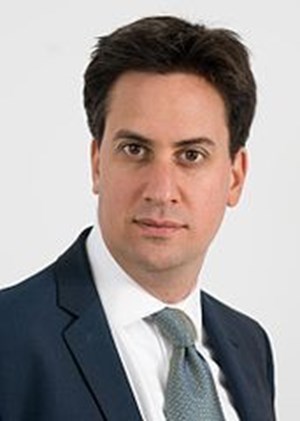
Ed Miliband lays out Labour’s plan to guarantee all young people get the chance to learn about, enjoy and contribute to our country’s culture.
Ed Miliband lays out Labour’s plan to guarantee all young people get the chance to learn about, enjoy and contribute to our country’s culture.
In a speech to the Creative Industries Federation at Battersea Arts Centre he warns that the achievements of the last Labour government in widening access to arts and culture for young people – helping build up Britain’s brilliant and world-beating creative industries – risk being undermined by the Conservatives.
And he sets out a programme to:
• Strengthen creative education in schools and after-school clubs;
• Widen access to our country’s arts and cultural institutions;
• Build an economy where young people can succeed with better career pathways from school, college and university into the arts or creative industries; and
• Put arts policy at the heart of government and help rebalance provision for young people across the country.
Ed Miliband puts new policy for arts and culture and creativity at the heart of the next Labour government’s mission. "Arts is an area where Britain still leads the world."
Here are some policy details:
1. Strengthening creative education in schools:
There is currently no formal requirement for arts and cultural education in schools and a number of schemes introduced by the Labour government to improve access have been cut. This has led to the number of primary school children taking part in music, for example, dropping from 55 per cent in 2010 to 36 per cent in 2013. Nicky Morgan, the Education Secretary, even stated recently that arts subjects hold children back.
Labour will increase provision of arts and cultural activities in schools by:
• Building the need for a creative education into Ofsted inspections – schools will only be able to receive an “outstanding” rating if they offer creative subjects and cultural opportunities within a broad and balanced curriculum.
• Asking schools to have a local culture champion to connect with arts organisations.
• Encouraging after-school clubs to offer music, drama, dance, art, sport or other creative activities as part of Labour’s promise of guaranteed access to wrap-around childcare between 8am and 6pm.
2. Widening free access to museums and galleries:
The successful policy introduced by the last Labour government of free entrance to museums is being put at risk by Tory neglect with some prestigious art galleries seeing a sharp decline in UK visitor numbers.
Labour will reinforce existing access and widen it still further for young people by:
• Guaranteeing that our national galleries and museums will continue to have free admission.
• Encouraging the Arts Council to use its grants programme to help organisations increase the number of activities they offer young people through schemes such as outreach programmes, reduced rate theatre tickets and clubs.
3. Building better career pathways into the arts and creative industries for talented young people so that they – and Britain – can succeed.
There were only 1,000 apprenticeship starts in the creative industries in 2013/2014, the lowest out of all sectors despite this being one of the fastest growing in our economy.
A Labour government will work with creative industries sector to increase the number of apprenticeships by:
• Requiring creative industries and arts institutions to offer more apprenticeships in return for direct grants or major government contracts.
• Giving employers more control over apprenticeships funding and standards in exchange for offering more and better opportunities, as well as encouraging creative industries and arts institutions to participate in Labour’s Compulsory Jobs Guarantee for young people under the age of 25 who have been out of work for six months or longer
4. Put arts policy at the heart of government and help rebalance provision for young people across the country
This government has not only ignored and neglected the arts community, but it has done nothing for arts in the regions which have suffered not only through cuts in the Arts Council budget but also ca sustained squeeze on local authority funding. Decisions on 75 per cent of the public funds available for the arts are made from the centre – much higher than in comparable countries. Public funding per head in the capital is, in turn, 15 times that in the rest of the country. Our vibrant arts institutions in London must thrive but more needs to be done to improve provision across the country.
The next Labour government will create a permanent, representative Committee on the Arts, Culture and Creative Industries chaired by the Prime Minister
Membership of which will be drawn from all sectors, regions and it will be tasked with:
• Bringing key issues of concern in the arts, culture and creative industries directly to the attention of the Prime Minister.
• Ensuring every government department recognises the value of arts and culture.
• Increasing funding for the arts and culture by bringing private and philanthropic sources of support into a closer relationship with the public sector.
• Expanding our agenda of increasing access to the arts and culture to all young people of any background.
• Putting in place a strategy for the arts and culture and cultural provision across the country to improve access for all.
More information is here.
Image above: Ed Miliband MP, the leader of the Labour Party, source: Wikipedia

ArtDependence Magazine is an international magazine covering all spheres of contemporary art, as well as modern and classical art.
ArtDependence features the latest art news, highlighting interviews with today’s most influential artists, galleries, curators, collectors, fair directors and individuals at the axis of the arts.
The magazine also covers series of articles and reviews on critical art events, new publications and other foremost happenings in the art world.
If you would like to submit events or editorial content to ArtDependence Magazine, please feel free to reach the magazine via the contact page.